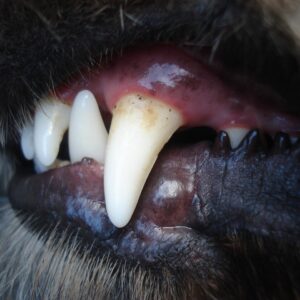Onsior for dogs and cats

Formulation
Tablets
Active ingredient
Robenacoxib
Category
Pain relief / anti-inflammatory
What is Onsior?
Onsior is a brand name for a drug with the active ingredient robenacoxib. It is a Non-Steroidal Anti-Inflammatory Drug (NSAID), a category of drug that stops the body from producing inflammatory chemicals. In this way, Onsior lowers pain and inflammation in cats and dogs with with various conditions (e.g. joint disease, muscle pain, post-surgical pain and inflammation).
What does Onsior do?
Robenacoxib, the active ingredient in Onsior, is a Non-Steroidal Anti-Inflammatory Drug (NSAID) that targets and blocks the action of COX-2. COX-2 is a protein involved in the creation of inflammatory substances. Inflammation, fever and pain are triggered by these inflammatory substances (prostaglandins).
Onsior lowers inflammation by blocking the effects of COX-2. This manages pain in cats and dogs after surgery. Onsior also manages pain that occurs with many short-term (acute) and long-term (chronic) conditions. Thus, cats and dogs with these conditions (e.g. joint disease) can enjoy an improved quality of life when they are on Onsior. Additionally, Onsior reduces inflammation-triggered fever in cats and dogs.
What is Onsior used for?
Onsior is used for cats and dogs with pain and inflammation from conditions such as joint disease. It is also often prescribed to cats and dogs with pain and inflammation from surgery.
Pets prescribed Onsior might be suffering from:
- Bone or joint pain: Onsior is commonly prescribed to cats and dogs with bone/joint issues such as arthritis. Cats and dogs with arthritis can have improved mobility and comfort after starting on Onsior.
- Muscle Pain: Onsior can alleviate pain in cats and dogs with muscle pain caused by strains or sprains.
- Post-Surgery Pain and Inflammation: Onsior is often used for postoperative inflammation and pain in cats and dogs after surgery (e.g. dental surgery, spay/neuter surgery).
This list is not exhaustive. Onsior might also be prescribed for other types of pain and inflammation if your vet thinks it will help.
What are the side effects of Onsior in dogs and cats?
Like all medications, Onsior can have side effects. These are generally rare when the drug is used properly.
- Gut upset: Some cats and dogs may have a gut upset. Signs include vomiting and/or diarrhoea. This happens to more than 10% of dogs and 1-10% of cats treated with Onsior.
- Sores on gut lining (gut ulcers): Prolonged use or higher doses of Onsior may cause gut ulcers, which may cause blood in the vomit and/or stool. This is uncommon, affecting less than 1% of treated dogs. It isn’t reported in cats.
- Decreased Appetite: Onsior may make some dogs eat less. This is fairly common, affecting 1-10% of dogs treated.
- Tiredness (Lethargy): Rarely, cats and dogs may have reduced activity (lethargy). This happens to less than 1 in 10,000 cats and dogs treated with Onsior.
- Kidney Damage: NSAIDs, including Onsior, can affect kidney function. It’s crucial to monitor for excessive drinking and urination, which may indicate kidney issues. This side effect was seen in less than 1 in 10,000 cats treated with Onsior.
- Liver Damage: Raised liver enzymes were seen on up to 10% of animals receiving Onsior for more than 2 weeks. These enzymes suggest liver damage could be occuring, although no signs of liver damage were seen. The enzymes either stabilised or decreased again with continued treatment.
- Allergic Reactions: In very rare cases, cats and dogs may experience an allergic reaction, characterised by swelling, itching, or difficulty breathing.
Remember, not all pets will experience these side effects, and the benefits of using Onsior often outweigh the risks. However, if you notice any concerning symptoms or changes in your pet’s behaviour or health while they are taking Onsior, do inform your vet immediately. They can give advice and modify the treatment plan (if required) to ensure your pet’s safety and well-being.
Which pets can’t take Onsior?
Generally speaking, Onsior is not suitable for the following pets:
- Cats and dogs allergic to Onsior, its ingredients, or any other NSAID
- Cats and dogs that are already on other anti-inflammatory drugs (e.g. other NSAIDs, corticosteroids).
- Cats and dogs that are pregnant, lactating or intended for breeding
- Dogs weighing less than 2.5kg or under 3 months of age
- Cats weighing less than 2.5kg or under 4 months of age
- Cats and dogs with bleeding disorders
- Cats and dogs with dehydration, heart problems, kidney problems and liver problems
The above pets are at a greater risk of side effects from Onsior.
If your pet has any of the above issues and your vet prescribes Onsior, your vet will discuss the risks involved and the importance of close monitoring. Onsior might still be the best choice for your pet based on a risk-benefit analysis.
How to give Onsior safely
1. Follow vet instructions: Always use Onsior exactly as your vet has prescribed. This includes the right dose and frequency. Never adjust the dose on your own, even if your pet seems to be feeling better or worse. If you aren’t sure of the dose prescribed, please call your vet to confirm.
2. Check with your vet if giving anything else: Your vet should be aware of other drugs your pet is on, but it’s always worth double-checking in case there’s been a miscommunication somewhere. If your pet is on supplements or non-prescription treatments, even if these are natural or herbal, you should also tell your vet when they prescribe Onsior, as they may not be suitable to be given together.
Pets are at greater risk of side effects if they have been prescribed Onsior and they are already on other anti-inflammatory drugs (e.g. other NSAIDs, corticosteroids). If your vet wishes to switch your pet from one anti-inflammatory drug to another, your pet will be taken off the previous anti-inflammatory for a certain amount of time (a “washout period”) before being started on the next anti-inflammatory. Therefore, you should also tell your vet about your pet’s past medications (within the last week).
3. Storage and Handling: Store Onsior according to the instructions on the packaging, usually in a cool and dry place. Wash your hands after giving Onsior to your pet. Make sure it’s out of reach of children and other pets. Pregnant women should not handle Onsior, as prolonged skin exposure can cause birth defects in unborn babies.
4. Give whole dose: Generally speaking, Onsior tablets should not be broken or crushed.
5. Give at least 30 minutes before or after a meal: Unless otherwise recommended by your vet, Onsior is best given on an empty stomach, ideally before a meal or at least 30 minutes after one. If needed, the tablet can be hidden in a treat or small amount of food.
4. Report any overdose to your vet immediately: If you have mistakenly given too much Onsior, inform your vet as soon as you realise the error. They may recommend blood tests, decontamination, supportive care(e.g.intravenous fluids) or monitoring, depending on the severity of the overdose.
Onsior FAQs
How does Onsior make cats feel?
At proper doses, Onsior can make cats feel more comfortable and more willing to move around. The level of improvement will vary amongst cats, with some cats showing dramatic improvement.
Should Onsior be given in food?
It’s best to give Onsior on an empty stomach, at least 30 minutes before a meal. However, it can be given in a small amount of food to help your dog or cat take it.
How do I get my cat to take Onsior?
Onsior tablets are flavoured – you can try giving them to your cat as a treat. If this doesn’t work, you can put Onsior in a treat or a small amount of food. You can also place the tablet in your cat’s mouth (only if your cat allows this – do not injure yourself!)
If you’re struggling to give Onsior to your cat, you might prefer an Onsior alternative, listed below.
How quickly does Onsior work?
When given orally, Onsior tablets are absorbed within 30 minutes and start working within 1-2 hours. However, depending on the type of pain and how long it has been going on for, your pet might not show improvement for a few days.
You should talk to your vet if your pet is still in pain after 24 hours on Onsior, as they may suggest alternative or complimentary treatments.
How many hours does Onsior last?
Onsior is absorbed within half an hour, but has a fairly rapid half life, meaning it’s quickly cleared from the body, although its effects can last for up to 24 hours. Onsior is usually given once every 24 hours, at the same time each day.
Is Onsior the same as Metacam?
How strong is Onsior for dogs?
Onsior is an NSAID, which means it works well for mild to moderate pain and inflammation. In many more severe cases, Onsior is best combined with other drugs to get a better pain relieving effect. For example, Onsior might be combined with paracetamol, gabapentin, or opioids, depending on the individual animal and the prescribing vet.
How many days can you give Onsior?
Give Onsior as prescribed by your veterinarian. For post-surgery, this might be as little as 3 or 4 days. However, Onsior can also be used long-term (2 weeks or more) in dogs and cats with chronic causes of pain or who are recovering from more severe surgeries such as cruciate surgery.
Onsior Datasheet
All drugs have a manufacturer’s datasheet, which gives information about the drug’s use and possible side effects. There is usually one in your Onsior box, but if you have lost it you can click on the button below to be taken on an online version.
Courses related to Onsior
If your dog or cat is on Onsior, you might be interested in learning more about their condition with our interactive, vet-written courses. Each one of our courses has been carefully written by qualified vets and e-learning specialists, and you have access to it – including all updates – for the rest of your pets’ life.

Dental Disease in Cats
Welcome to Petlearnia’s exclusive course on “Dental Disease in Cats.” Designed for dedicated cat owners like you, this course offers an in-depth understanding of feline dental health, a topic often overlooked but critical for your cat’s overall well-being.
<h2 clas…
Please note that the information contained herein is provided for informational purposes only. Although it has been written by a vet, we cannot consider the individual nature of your pet’s problems so it does not constitute veterinary advice. If you have questions about your pet’s medication or their health you should contact a vet, who will be able to help.
Last updated:






